Weather, Weather patterns and climate -> comets
Comets
A comet is a small, icy body that orbits the Sun. It is made up of dust, rock, and frozen gases such as water, carbon dioxide, methane, and ammonia. Comets are often referred to as "dirty snowballs" or "icy dirtballs" because of their composition.
Structure of Comets
Comets have a few main components:
- Nucleus: This is the solid, central part of the comet, made up of ice and rock.
- Coma: As a comet gets closer to the Sun, its ice begins to vaporize and forms a cloud of gas and dust around the nucleus, called the coma.
- Tail: The solar wind and radiation pressure from the Sun push the gas and dust away from the coma, forming a tail that can stretch for millions of kilometers.
Orbit and Origin
Comets have highly elliptical orbits, which means they can spend most of their time in the distant reaches of the solar system before swinging in close to the Sun. Many comets come from the Kuiper Belt and the Oort Cloud, which are regions beyond the orbit of Neptune that contain icy bodies left over from the formation of the solar system.
Study Guide
Here are some key points to remember when studying comets:
- Describe the composition of a comet.
- Explain the structure of a comet, including the nucleus, coma, and tail.
- Discuss the origin of comets and their orbits.
- Compare and contrast comets with other celestial bodies such as asteroids and meteors.
- Research famous comets throughout history and their impact on our understanding of the solar system.
◂Science Worksheets and Study Guides Fifth Grade. Weather, Weather patterns and climate
Study Guide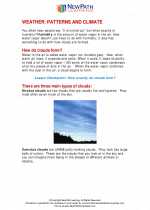 Weather, Weather patterns and climate
Weather, Weather patterns and climate  Worksheet/Answer key
Worksheet/Answer key Weather, Weather patterns and climate
Weather, Weather patterns and climate  Worksheet/Answer key
Worksheet/Answer key Weather, Weather patterns and climate
Weather, Weather patterns and climate  Worksheet/Answer key
Worksheet/Answer key Weather, Weather patterns and climate
Weather, Weather patterns and climate  Vocabulary/Answer key
Vocabulary/Answer key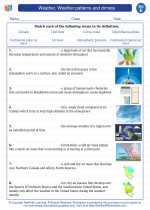 Weather, Weather patterns and climate
Weather, Weather patterns and climate  Vocabulary/Answer key
Vocabulary/Answer key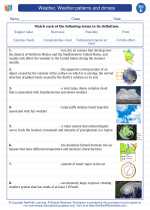 Weather, Weather patterns and climate
Weather, Weather patterns and climate  Vocabulary/Answer key
Vocabulary/Answer key Weather, Weather patterns and climate
Weather, Weather patterns and climate  Vocabulary/Answer key
Vocabulary/Answer key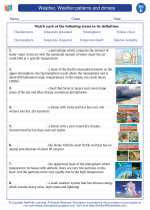 Weather, Weather patterns and climate
Weather, Weather patterns and climate  Vocabulary/Answer key
Vocabulary/Answer key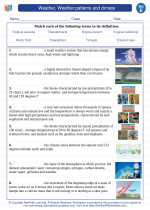 Weather, Weather patterns and climate
Weather, Weather patterns and climate 

 Worksheet/Answer key
Worksheet/Answer key
 Worksheet/Answer key
Worksheet/Answer key
 Worksheet/Answer key
Worksheet/Answer key
 Vocabulary/Answer key
Vocabulary/Answer key
 Vocabulary/Answer key
Vocabulary/Answer key
 Vocabulary/Answer key
Vocabulary/Answer key
 Vocabulary/Answer key
Vocabulary/Answer key
 Vocabulary/Answer key
Vocabulary/Answer key

The resources above cover the following skills:
Earth Systems Science
Earth's surface changes constantly through a variety of processes and forces. Students can:
Analyze and interpret data identifying ways Earth's surface is constantly changing through a variety of processes and forces such as plate tectonics, erosion, deposition, solar influences, climate, and human activity
Develop and communicate an evidence based scientific explanation around one or more factors that change Earth's surface